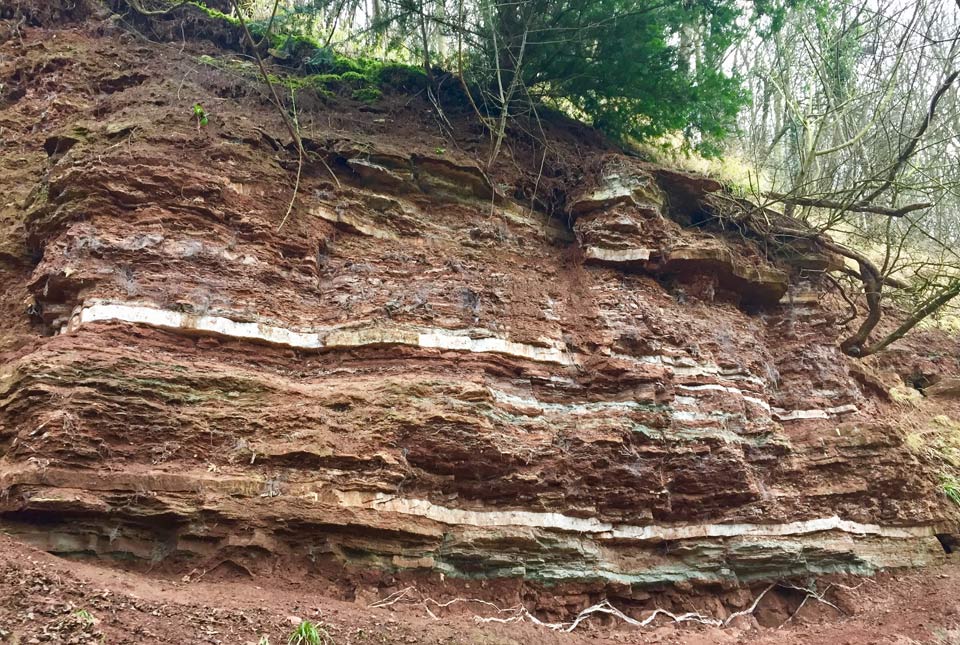Over thousands of years, the River Trent has eroded away rocks of the Mercia Mudstone Group across Nottingham. There is a steep river cliff beneath Clifton Village, where exposures of the red mudstones and fine green sands are easily accessible.
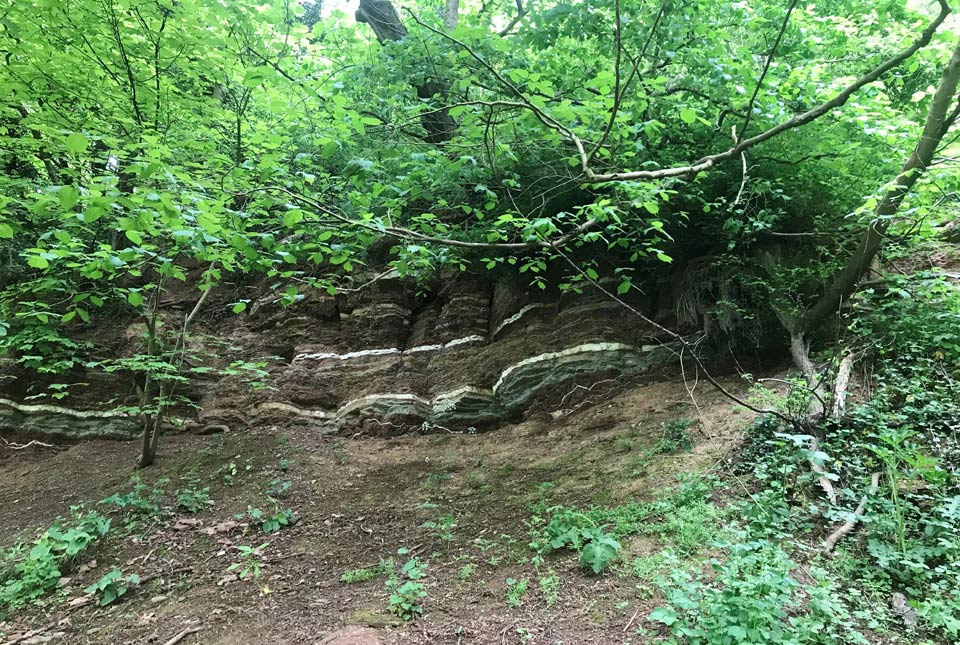
Rocks of the Mercia Mudstone Group exposed in river cliffs beneath Clifton Village, Nottingham. BGS © UKRI.
The river cliff has excellent exposures of the Mercia Mudstone, a blocky, red, mud rock with layers of fine green sand- and mudstones. There are also bands of white, fibrous gypsum. The gypsum would originally have precipitated out of evaporated sea water and later dissolved and re-precipitated as veins running through the rock.
The Mercia Mudstone Group was deposited in the Triassic Period (200 to 250 million years ago) in a sea that was subjected to high rates of evaporation in an arid climate.
The path through the woodland is a wildlife haven. In spring, the path is bordered by native bluebells, wild garlic and celandine. The path leads to Holme Pit, an artificial pond fringed by reeds that is a favourite spot for bats and many wetland birds through the seasons.
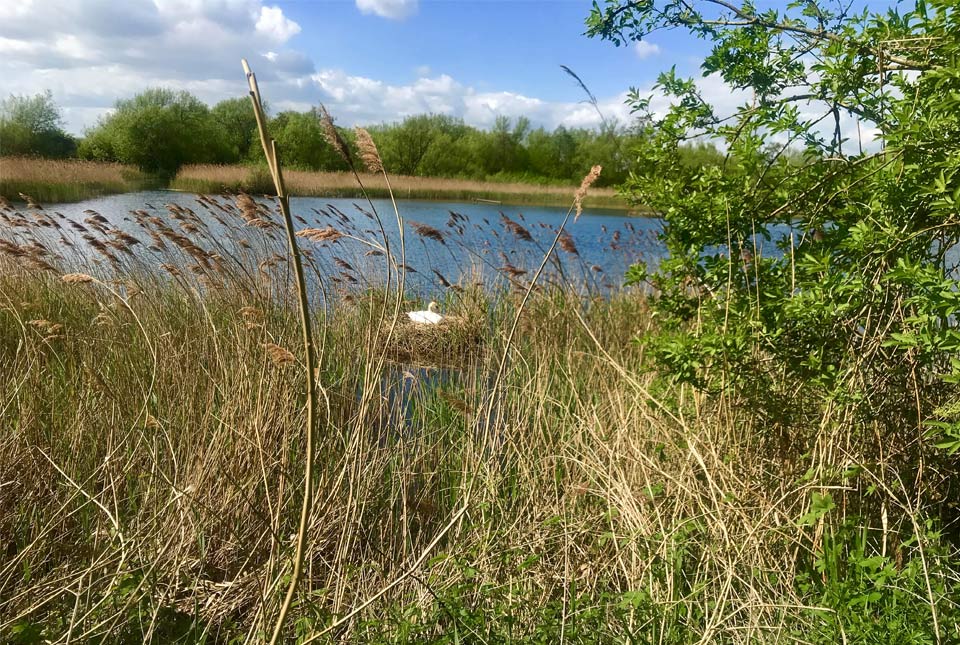
A swan sits on her nest in Holme Pit. BGS © UKRI.
Getting there
From the A453, turn into Clifton Village and head for Clifton Manor (SK 54543483) close to the Clifton campus of Nottingham Trent University. Clifton Manor, parts of which date from the 13th century, stands next to medieval St Mary’s Church. Parking can be found in a small car park opposite the church or along the road side.
Take care on the steep path down to the river and turn left at the base of the slope. Follow the level path through the ancient woodland of beech, lime and larch. Look out for some very old oak trees and a few giant redwoods from when the Manor owned the land.
When visiting remote sites, be sure to observe the latest parking and access signage. Always wear suitable clothing and be aware of deteriorating footpaths and changing weather conditions.
Further information
- Nottinghamshire Wildlife Trust
- BGS information on the engineering geology of the Mercia Mudstone
- Wikipedia
- Mercian Geologist
About the author

Prof Melanie Leng
BGS Chief Scientist, environmental change, adaptation and resilience
You may also be interested in

Discovering Geology
Discovering Geology introduces a range of geoscience topics to school-age students and learners of all ages.
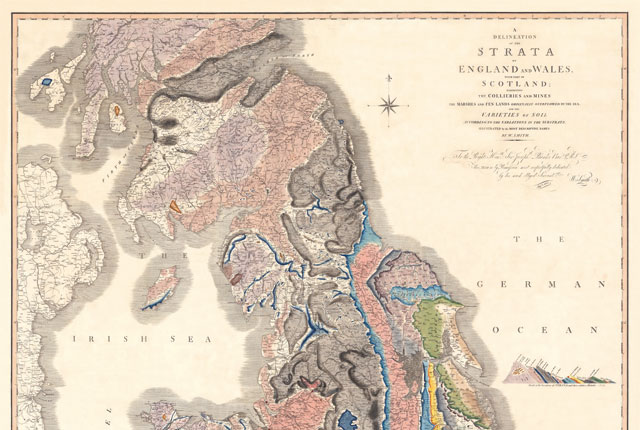
Maps and resources
Download and print free educational resources.
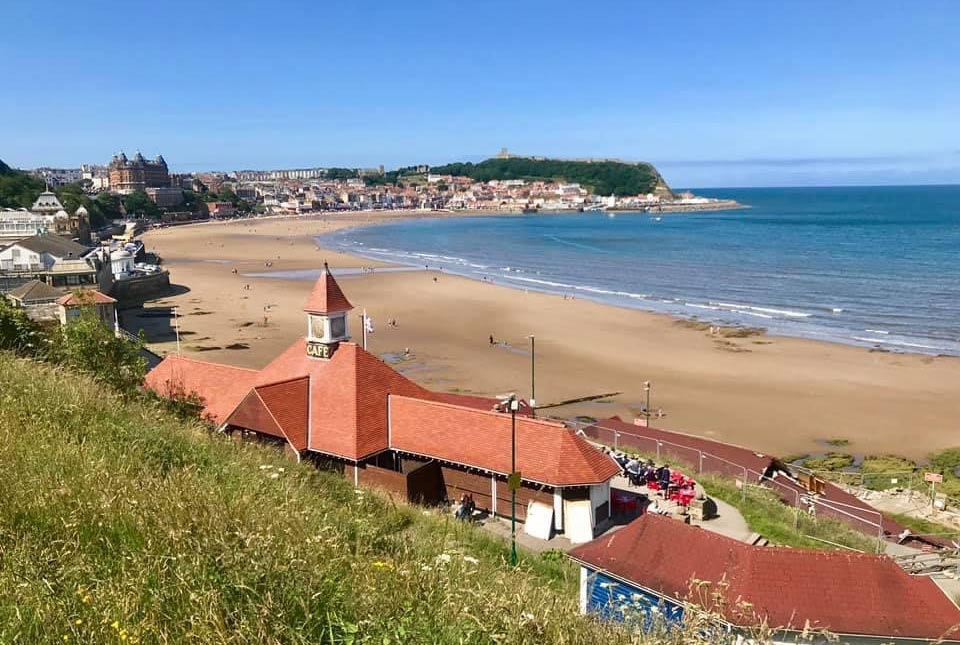
Postcard geology
Find out more about sites of geological interest around the UK, as described by BGS staff.




